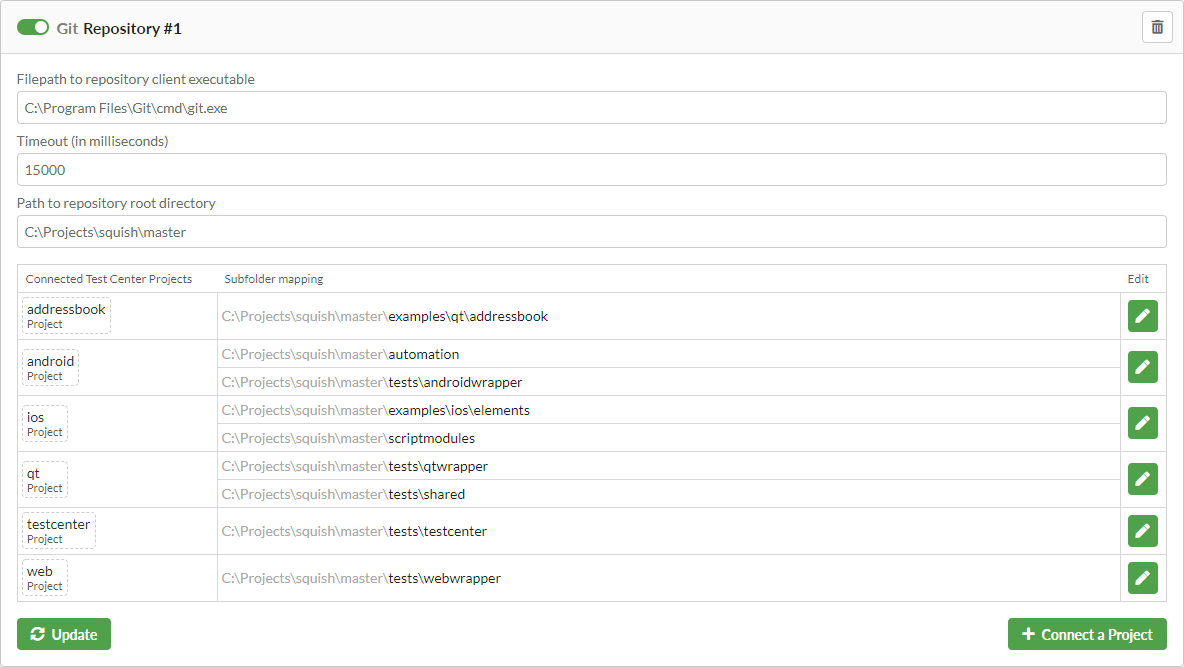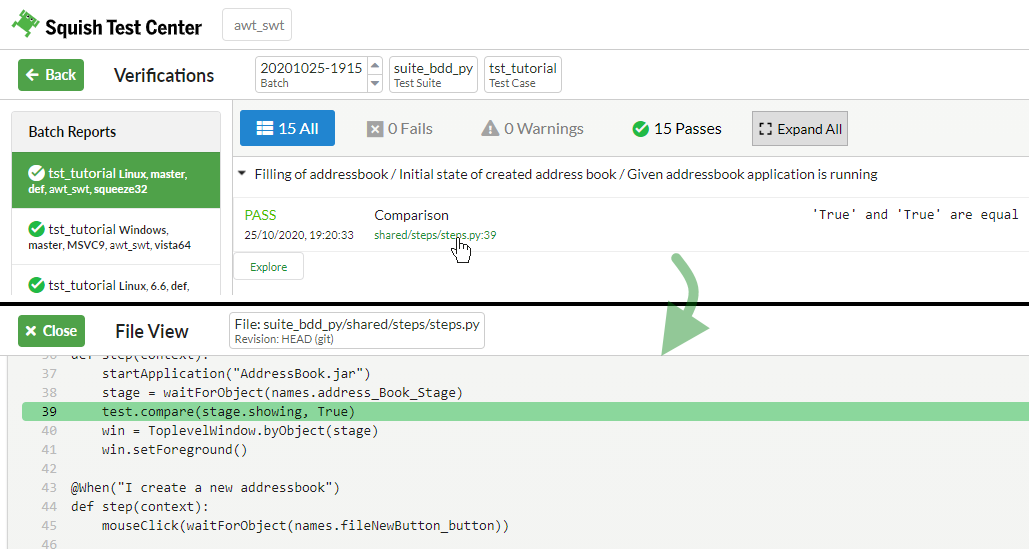Table of Contents
Squish Test Center allows any user with admin rights to specify different types of repositories and link them to your projects. You can use this to quickly access your test sources from the results shown on the Verifications View (Section 3.4) or easily compare your Visual Verification Points with the expected VVP from your repository.
You can add/configure your repositories on the Global Settings page under the Repository Integration tab. Add a repository for Squish Test Center to use by clicking on the button. A dialog will show up in which you can select the type of repository you wish to add. You can find more information on the supported types of repositories below. Fill out the required repository settings and click . The settings page should now list your repository. You can always change your settings later by pressing the button of a repository. Project mappings and subfolders are updated separately. Click and select the Squish Test Center project that will use this repository. Click to confirm. You can link multiple projects to one repository this way.

In the table that lists the connected projects, you can use the button to specify subfolders for each project. Subfolders are used to limit the search of one repository. You can use them to avoid possible search duplicates and to increase performance. If at least one subfolder is specified for a project, only its specified subfolders are searched.
![[Note]](images/note.png) | Note |
|---|---|
The repository settings will always include the path to the root of your repository. Make sure this path points to the root and not any subfolder of your repository. |
Enable or disable repositories by clicking the switch on the left end of the repository widget header (next to its title). You can remove a repository and all its settings (including project specific mappings) by clicking the on the right end of the repository widget header.
If a project is connected to an active repository, the filepaths and stacktraces below a verification can be clicked and will lead to a page displaying the contents of the file and highlight the line from which the verification originates.
 |
Viewing the test source from the Verifications View (Section 3.4)
![[Note]](images/note.png) | Note |
|---|---|
An error will be shown in case the file could not be found. Speak to your admin to in case this happens. Adding a subfolder mapping for your project can solve this problem. |
This repository type requires a git client and a clone of your repository on the machine that runs Squish Test Center. Fill in the following settings:
Automatically pull new data when viewing files determines whether or not the git repository will perform a pull command to always have the newest state of the remote checked out.
Push to remote when updating VP file determines whether updating a verification point file will only create a local commit or whether the change should also be pushed to a remote repository.
Default Branch specifies which branch should be used for verification point file updates when no branch is specified via the .git.branch label.
Filepath to repository client executable stores the filepath to the git executable on the machine that runs Squish Test Center
Timeout (in milliseconds) determines how long git is allowed to search for a file until the request is canceled.
Path to repository root directory stores the path to the git repository root folder on the machine that runs Squish Test Center.
![[Warning]](images/warning.png) | Warning |
|---|---|
For the git integration to work correctly, make sure the following applies to your git repository:
|
This repository type requires a copy of your test files on the machine that runs Squish Test Center. Fill in the following setting:
Path to repository root directory stores the path to the root folder (used for searching) on the machine that runs Squish Test Center.
Some repositories may support version control. You can use special report labels (see Uploading Results (Section 3.5)) to signify from which revision of test sources the results originated. Squish Test Center will detect this label and automatically fetch the version of the file from that revision. The following labels are supported:
.git.revision=<commit-hash> is used for the Git integration. Example: .git.revision=7c47eb6
.git.branch=<branch-name> is used by the Git integration to determine which branch should be used for verification point file updates (see Git Repository (Section 3.4.3.2)). Example: .git.branch=main